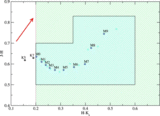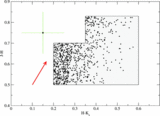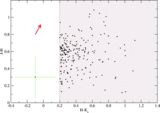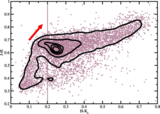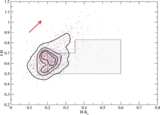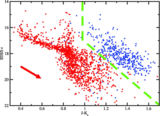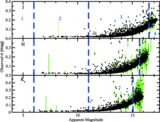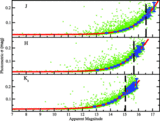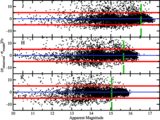Image Details
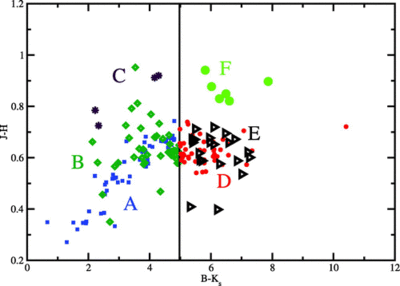
Caption: Fig. 68.
We plot ﹩B-K_{s}﹩ vs. ﹩J-H﹩ for our sample of ﹩\left|b\right|> 20^{\circ }﹩ variables, using Cal‐PSWDB average apparent magnitudes. We assign different symbols to different color regimes to distinguish the different types of variables. We identify B‐magnitudes from the PSC optical counterparts taken from USNO‐A2.0 and Tycho 2 (Monet et al. 1996; Høg et al. 2000; Johnson B and photographic B, respectively), SIMBAD with a 5﹩\arcsec﹩ search radius, and SDSS DR5. The blue squares ("A"; K‐type star or earlier), green open diamonds ("B"; extragalactic or CV), and maroon stars ("C"; extragalactic) correspond to sources with ﹩B-K_{s}< 4.97﹩. The red circle ("D"; M dwarf) correspond to sources with ﹩B-K_{s}> 4.97﹩. The open black right‐facing triangles ("E"; M dwarf or extragalactic) are lower limits corresponding to sources with no identified B‐band counterpart; we assign a B magnitude of 21 for the points plotted. "E" sources are consistent with the near‐IR colors of "D" sources. The green circles ("F"; red giant) correspond to sources with ﹩B-K_{s}> 4.97﹩ and ﹩J-H> 0.79﹩. The letter designations A–F are the same as in Tables 12–14 and are described in Table 12.
Copyright and Terms & Conditions
© 2008. The American Astronomical Society. All rights reserved. Printed in U.S.A.


